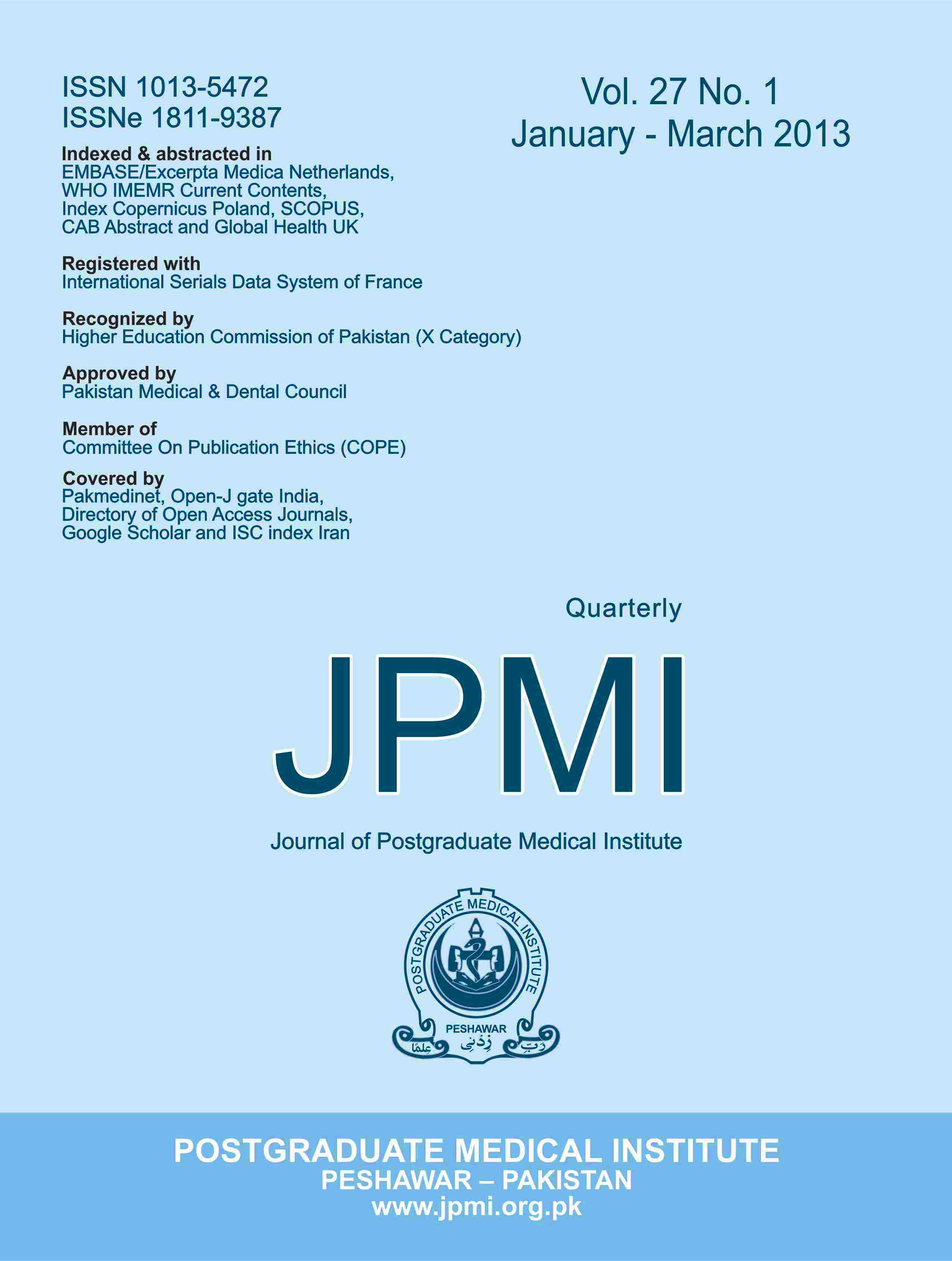TREATMENT OF SEGMENTAL TIBIAL BONE LOSS BY DISTRACTION OSTEOGENESIS
Main Article Content
Abstract
Objectives: To assess the clinical outcome of reconstruction of segmental tibial defects by the technique ofbone transport.
Methodology: This prospective, quasi-experimental study was conducted in Lady Reading Hospital andprivate hospitals of Peshawar, Pakistan from October 2009 to September 2011. Segmental losses of tibialdiaphysis in 32 patients were 'regenerated' by bone transport.
Results: Radiological results were excellent in 24 (75%), good in 3 (9%), fair in 4 (12%) and poor in 1(3%) patient. Clinical results were excellent in 19 (59%), good in 7 (22%), fair in 5 (16%) and poor in 1(3%) patient. During follow-up there were 9 obstacles of pin/wire infections and 7 problems whichrequired surgical intervention. At the last follow-up there were 6 true complications. The average fixatortime (external fixator index) was 25.9 weeks and the average bone healing time was 26.1 weeks.
Conclusions: Distraction osteogenesis may be the best biological method of restoring the integrity of abone in segmental bone loss.
Article Details
Work published in JPMI is licensed under a
Creative Commons Attribution-NonCommercial 2.0 Generic License.
Authors are permitted and encouraged to post their work online (e.g., in institutional repositories or on their website) prior to and during the submission process, as it can lead to productive exchanges, as well as earlier and greater citation of published work.


